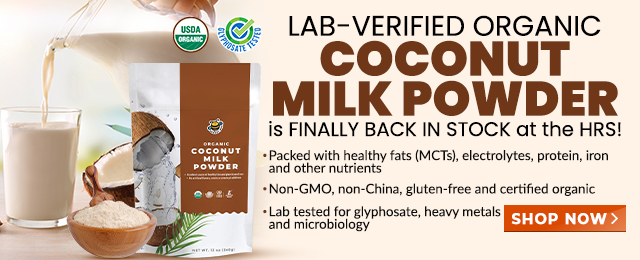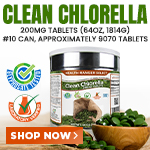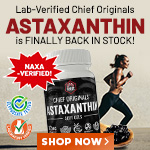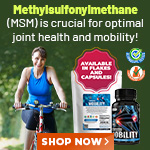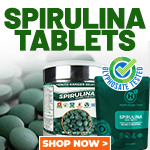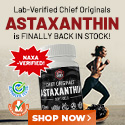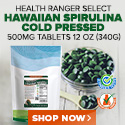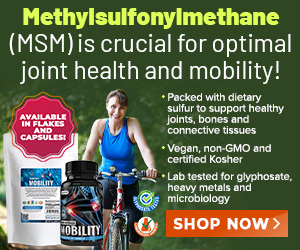Chocolate is actually GOOD for pregnant women (just make sure you find some that's low in cadmium)
Monday, March 14, 2016 by: Ethan A. Huff, staff writer
Tags: chocolate bars, cadmium, lead

(NaturalNews) Could that enticing chocolate bar be the key to a healthy pregnancy? A new study out of Canada suggests so, revealing that regular intake of both low- and high-flavonol chocolate may help reduce a woman's risk of preeclampsia, a condition marked by an unusual jump in blood pressure that puts her and her unborn baby's life at risk.
The study, which was presented at the recent 2016 Pregnancy Meeting of the Society for Maternal-Fetal Medicine in Atlanta, further found that chocolate may also help improve fetal growth and development, for reasons that aren't yet fully understood. But one thing is clear: there are definite health benefits to be had from this sweet treat!
The randomized, controlled trial looked at 129 women who were between 11 and 14 weeks of gestation. All the women had double notching on their uterine artery Doppler pulsatility index at baseline – this just means that the women all had heavy resistance to blood flowing into their placenta, suggesting a high-risk fetal outcome such as hypertension of preeclampsia.
All the women were assigned to one of two groups given 30 grams per day of either low-flavanol or high-flavanol chocolate. At the end of 12 weeks, each woman's uterine artery Doppler pulsatility was measured a second time, and follow-up evaluations were given to all the women until the time they gave birth.
Variances in rates of preeclampsia, gestational hypertension, placental weight and birthweight were virtually nonexistent between the two groups, however researchers noted significant improvements in the uterine artery Doppler pulsatility rates of women in both groups. This led them to speculate that an expectant mother who regularly eats either low- or high-flavanol chocolate could be helping to improve the growth and development of her unborn child.
"This study indicates that chocolate could have a positive impact on placenta and fetal growth and development and that chocolate's effects are not solely and directly due to flavanol content," stated study co-author Dr. Emmanuel Bujold from the Universite Laval in Quebec City.
Love chocolate? Just make sure your favorite brand is free of lead and cadmium
While this is good news for all the chocolate-loving, sweet-toothed women out there, it's important to remember that not all chocolate is the same in terms of quality and purity. Some varieties of chocolate, as revealed by the Oakland, California-based non-profit group "As You Sow," contain potentially dangerous levels of lead, cadmium and other toxic heavy metals.As The Washington Post reported last February, some 26 different varieties of chocolate tested by As You Sow were found to contain levels of lead and cadmium exceeding the amounts currently allowed under California's Proposition 65 toxic chemical law. The As You Sow testing sweep indicts major brands like Ghiradelli, Godiva, The Hershey Company, Mars, See's Candies, Theo, Trader Joe's, Whole Foods Market and more.
A complete listing of contaminated brands, as tested by As You Sow, is available here.
"We are getting [lead and cadmium] from multiple sources," explained Eleanne Van Vliet, director of toxic chemicals research at As You Sow, during an interview following her group's release of the findings. "The problem with those toxic heavy metals is they accumulate in the body. It's terrible for adults, but especially for children."
The group has also published a list of non-offending brands, according to tests it conducted. That list is available here.
The Natural News Forensic Food lab, headed by our own Mike Adams, has also conducted its own tests on chocolate to see which brands contain high levels of cadmium and lead. For more about heavy metal contamination in your favorite foods, be sure to visit FoodForensics.com
Sources for this article include:
MedicalNewsToday.com
DailyMail.co.uk
WashingtonPost.com
Chocolate bars at FETCH.news
Get independent news alerts on natural cures, food lab tests, cannabis medicine, science, robotics, drones, privacy and more.
Take Action: Support Natural News by linking to this article from your website
Permalink to this article:
Embed article link: (copy HTML code below):
Reprinting this article:
Non-commercial use OK, cite NaturalNews.com with clickable link.
Follow Natural News on Facebook, Twitter, Google Plus, and Pinterest
- Newly released JFK files reveal Pentagon's role in creating Lyme disease and covid in the same lab
- Oncologist warns of ‘terrifyingly aggressive’ cancers in children, linked to immune suppression from COVID vaccines
- Trump administration CUTS FUNDING to Gavi, the Vaccine Alliance - a major blow to the Bill Gates-backed entity
- Health Ranger Report: Ashton Forbes discusses TELEPORTATION ORBS and their role in MH370 disappearance
- NIH study, buried for decades, reveals that Flu Shots INCREASE elderly deaths, not prevent them
- Musk targets “strangely wealthy” lawmakers in DOGE probe, names Pelosi, McConnell, Schumer
- Millionaire fitness coach charged in Tesla vandalism incident as anti-Musk attacks escalate
- COVID-19 scandal linked to CANCER SURGE: Billionaire researcher sounds alarm
- EPA banned chemical linked to cancer, Parkinson's and fatal heart defects in babies - now industry is lobbying to get it reinstated
- “Ethically sourced” human “bodyoids” could usher in a new era of medical exploitation, raising disturbing ethical questions
- Woman contracts WORLD'S DEADLIEST VIRUS after unknowingly being given the WRONG VACCINE
- At least 75 percent of Americans are unknowingly MEDICATED FOR STUPIDITY by fluoridated water – Utah now banning it
- Civil war is here – Multiple events, from conservatives being “swatted,” to attacks against Telsa owners, happening across America as Dem politicians are telling supporters to ‘fight in the streets”
- DARPA: The shadowy innovator behind the world’s most advanced military technologies
- Tackling the rubber waste crisis: Groundbreaking study reveals eco-friendly method to recycle tires
- U.K. unveils controversial pandemic preparedness tool: A double-edged sword?
- Ancient kitchen secrets REVEALED: How garlic, ginger and green onions fight cancer and heart disease
- Homesteading Boom: How families are escaping cities to grow their own food
- Newly released JFK files reveal Pentagon's role in creating Lyme disease and covid in the same lab
- Analysis: The coming economic collapse, a mass uprising and Trump's three secret weapons to halt the growing revolt
- Trump's greatest betrayal so far: Accelerating Middle East wars, silencing dissent, and serving Zionist masters
- CDC finally halts $11 billion COVID funding scam as health officials admit the ‘pandemic’ was a fraud
- The hidden dangers in your kitchen: How cooking methods impact diabetes, cancer and aging
- Kiss Your Genetic Privacy Good-Bye! 23andMe Gets Green Light to Sell Your Intimate Genetic Details to Anyone They Want
- DEADLY DECEPTION: How COVID vaccines increased mortality rates and why authorities hid the truth
- Dr. Suzanne Humphries makes bombshell appearance on Joe Rogan podcast, exposing vaccine industry deception back to POLIOMYELITIS
- Trump nominates VACCINE ZEALOT Susan Monarez to lead the CDC, sidelining RFK Jr.'s reform efforts
- Here are TEN all-natural ways to protect your garden without using harmful chemicals
- Woman contracts WORLD'S DEADLIEST VIRUS after unknowingly being given the WRONG VACCINE
- Senate Democrats deny censorship industrial complex existed, defend government's role in silencing dissent
- Black cumin seed oil emerges as a powerful ally against breast cancer and chronic inflammation
- Sugar-free deception: Artificial sweeteners hijack hunger signals, fuel obesity epidemic, study warns
- “Independent” anti-Russia outlet MEDUZA faces COLLAPSE as US funding dries up
- The Health Ranger releases “Vaccine Zombie” song and music video, using AI-animated zombies for the music video
- Discovery of vast underground city beneath Giza pyramids challenges human history
- Key nodes of Federal Government censorship
- Newly released JFK files reveal Pentagon's role in creating Lyme disease and covid in the same lab
- California's social media censorship law struck down: A victory for free speech or a threat to online safety?
- EPA advisor admits the agency is funneling billions to climate groups ahead of Trump’s return to White House
- The Health Ranger releases “Vaccine Zombie” song and music video, using AI-animated zombies for the music video
- Dr. Mike Yeadon releases 15-minute testimony - WATCH - about genocidal intent of COVID “vaccines”
- Florida takes a stand: DeSantis proposes permanent ban on mRNA vaccine mandates
- “Why we influenced the 2020 elections”: Facebook files reveal the coordinated effort to bury the Hunter Biden laptop story
- Mike Adams releases country western hit single: Goin’ Back in Time is Comin’ Home
- The pandemic as a tool for INDOCTRINATION: Understanding “The Indoctrinated Brain” by Dr. Michael Nehls
- Unpacking the Lies That We’ve Been Fed – new song and music video released by Mike Adams, the Health Ranger
- Mike Adams releases music poetry sensation: A Child of God
- House Intelligence Committee calls for the ARREST and PROSECUTION of Dr. Anthony Fauci
- Rep. Nancy Mace introduces bill to ban biological males from female facilities on federal property
- Michigan sheriff announces criminal investigation into 2020 election crimes, Dominion Voting Systems
- Peter Rost exposes Big Pharma corruption in his book “The Whistleblower: Confessions of a Healthcare Hitman”
- Migrants are taking advantage of recent hurricanes to scam residents and loot their homes
- Sugarcane extract superior to cholesterol-lowering drugs?
- Survival 101: Effective EMF blocking techniques
- Red Cross issues warning to stop blood plasma donations from vaccinated people
- Scientists confirm: GENIUS brain function can be spontaneously unleashed in humans without any apparent cause
- EPA advisor admits the agency is funneling billions to climate groups ahead of Trump’s return to White House
- HYSSOP: What research reveals about the health benefits of this ancient holy herb
- Two containers with completed ballots fall out of truck in Florida
- Fully vaccinated about to see “tsunami” of illness and death, warns virologist
- Global leaders unite to clamp down on “misinformation” with UN-backed Cascais Declaration
- BREAKING: 2025 NDAA authorizes mandatory military draft of WOMEN across America… as Pentagon pursues global NUCLEAR war with both Russia and China at the same time
- Michael Yon warns of a ZIONIST TAKEOVER in Trump’s second administration
- BOMBSHELL: DNA testing kits are a SCAM to develop ethnic-specific bioweapons
- Ozempic and Wegovy weight loss drugs are injectable LIZARD VENOM PEPTIDES that may unleash a devastating wave of organ failure… side effects align with symptoms of SNAKE BITES
- Israeli soldiers accused of even more torture and abuse in the West Bank
- These 13 countries just signed an agreement to engineer a global FAMINE by destroying food supply
- NASA admits that climate change occurs because of changes in Earth’s solar orbit, and NOT because of SUVs and fossil fuels
- RFK Jr. clears key hurdle: Sen. Susan Collins backs controversial HHS nominee, signaling a new era for health policy
- Sermon 30: How Jesus reveals Caesar’s FAKE CURRENCY and FALSE AUTHORITY
- Coriander seeds: Ancient medicine backed by modern science
- Arizona officials claim Maricopa County needs 10-13 days to tabulate results of the election
Science News & Studies
Medicine News and Information
Food News & Studies
Health News & Studies
Herbs News & Information
Pollution News & Studies
Cancer News & Studies
Climate News & Studies
Survival News & Information
Gear News & Information
News covering technology, stocks, hackers, and more



"Big Tech and mainstream media are constantly trying to silence the independent voices that dare to bring you the truth about toxic food ingredients, dangerous medications and the failed, fraudulent science of the profit-driven medical establishment.
Email is one of the best ways to make sure you stay informed, without the censorship of the tech giants (Google, Apple, Facebook, Twitter, YouTube, etc.). Stay informed and you'll even likely learn information that may help save your own life."
–The Health Ranger, Mike Adams











